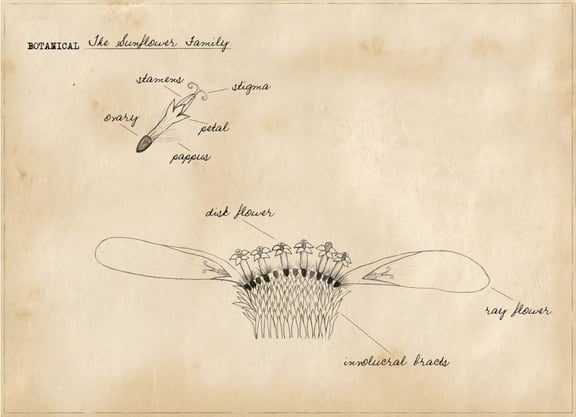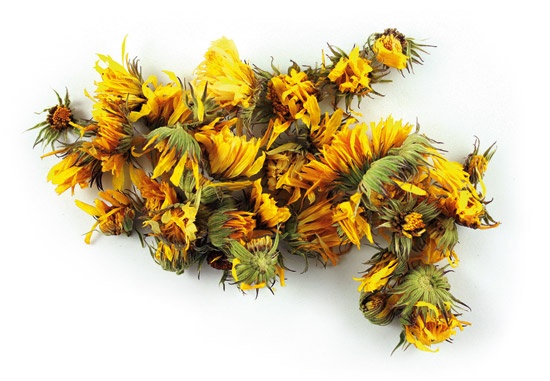Have you been out botanizing this month? Are you starting to see the patterns within plant families?
Well, here's the very last lesson in our basic botany series!
Let's take a look at the Sunflower family...
Asteraceae – The Sunflower Family
(as-ter-AY-see-ee)
Identification Tips
Did you know that each one of those stunning “petals” is actually an individual flower?
- Many individual flowers packed into a single flower head.
- Ray flowers, like those found around the perimeter of a sunflower, have one long petal.
- Disk flowers are tubular, like those found in the center of a sunflower.
- Some plants in this family may have one or both types of flowers.
- The composite flower head is surrounded by green leaf-like bracts.
- The sepals have been reduced to a ring of hairs, scales, or bristles called the pappus.
- Five stamens united by their anthers.
- The one-seeded fruit is called an achene.
Food and Medicine
Asteraceae is one of the largest plant families and among the easiest to identify thanks to the tell-tale inflorescences. This family includes echinacea, dandelions, mugwort, yarrow, arnica, chamomile, calendula, burdock, milk thistles, chrysanthemum, sunflower, safflower, helichrysum, cornflower, chicory, artichokes, and there are so many others I'm sure I've missed.
The medicinal properties of this family range greatly from bitters for digestive health (dandelion) to skin soothers (calendula), liver support (milk thistle), injury care (arnica), fevers (yarrow), alteratives (echinacea) and even dream work (mugwort). There are also many food plants in this family, as well as poisons, so proper study and learning to identify them confidently is key!
For more in the Basic Botany Series see:
Books for budding botanists:
Petersons Field Guide to Western Plants
Peterson Field Guide to Eastern Plants
The Complete Guide to Edible Wild Plants
Medicinal Plants of the Pacific West












